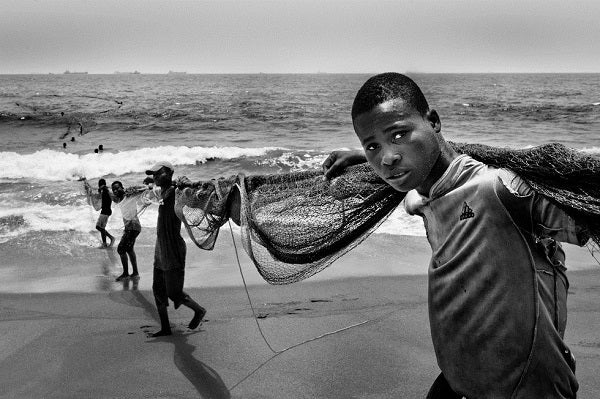20 Years of Financial Inclusion Progress in WAEMU; More to Come!
Looking back over the past two decades since CGAP was formed in 1995, much has changed in the financial inclusion landscape of the West Africa Economic and Monetary Union (WAEMU). Most importantly, the region has shifted from primarily offering informal microfinance to fully regulated and diversified financial institutions that offer all kinds of products and services. There are several important aspects of this history, including pro-financial inclusion regulations, a long track record of financial cooperatives, increased competition as providers have diversified, the importance of serving small farmers, and the ushering in of new opportunities powered by digital technology, that should be highlighted.

Regulations and policies in the past 20 years had a great influence on the microfinance and financial inclusion landscape in WAEMU
Prior to 1995 and CGAP’s formation, savings and loan services for those excluded from the traditional banking system were not regulated. Instead, people used informal services delivered by community-based mechanisms or saving money away home. Four dates mark the most important regulatory changes which influence financial inclusion:
December 1993: The Council of Ministers of WAEMU voted on the so-called "PARMEC law" which gradually came into force from 1994 to 1997 in the eight countries of the region. It was the first regulatory framework for microfinance institutions in WAEMU. This first regulation was exclusively focused on financial cooperatives, the only type of institutions which could be licensed.
July 2006: BCEAO, the regional Central Bank, was one of the first regulators in the world to adopt regulations expressly authorizing the issuance of electronic money by non-bank institutions through a directive adopted in July 2006. It is under this directive that mobile operators in partnership with banks were able to introduce mobile money to the WAEMU market starting in 2008 (with Orange in Côte d'Ivoire). In addition, several non-bank E-money issuers have since been licensed, like Celpaid in Côte d'Ivoire.
April 2007: A new microfinance regulation was adopted by the Council of Ministers of WAEMU to replace the “PARMEC law.” This regulation allowed a diverse range of microfinance institutions, financial cooperatives, associations and companies such as "greenfield" institutions to be licensed. In addition to savings and credit services, this law enabled MFIs under certain conditions to provide additional services, such as insurance and e-money issuance.
May 2015: A new directive on E-money issuers has just replaced the 2006 law adopted by BCEAO. It is expected that this new directive will change the landscape to facilitate more innovations from MNOs and push banks to re-think their position in the branchless banking market. Ultimately, this should result in increased levels of financial inclusion.
In parallel, governments within WAEMU have focused on promoting microfinance as a way to increase access to basic financial services by adopting national microfinance strategies supported by international funders. In recent years, in most of the eight WAEMU countries, national microfinance strategies have been replaced by national financial inclusion strategies; consolidation and professionalization of the microfinance sector is at the heart of these strategies while the development of the digital finance ecosystem is a new preoccupation.
Financial cooperatives and saving services were the starting point of microfinance in WAEMU
In 1995, the oldest microfinance mechanisms in WAEMU had already more than 20 years of existence. Originally microfinance institutions emerged in rural areas with a status of cooperatives under the authority of Cooperatives’ department in Ministries of Agriculture and have since expanded in urban areas.
Providers have diversified, which leads to greater competition
After the 2007 regulation passed, the financial services field opened to more players. Financial cooperatives still remain the leading actors, but some of them are underperforming institutions and others have failed all together. As a result, the so called “Greenfield” financial institutions, like Microcred and Advans, have earned more and more market share.
Banks remain timid and struggle in reaching the base of the pyramid but are making efforts to target small enterprises. One promising example is Manko in Senegal, a subsidiary of Société Générale, which is using a digital channel to reach small businesses in the informal sector. In parallel, and despite the growing number of formal financial institutions and branches, informal financial tools, such as VSLAs (village savings and loan associations), remain very active. Some are promoted by international NGOs, who are seeking to link VSLAs with formal financial institutions using mobile money.
Access to financial services for small farmers and rural populations remains a frontier issue
In WAEMU, on average more than 60% of the population is rural. Despite progress in financial inclusion in the 20 past years, financial institutions didn't haven’t found the right business model to serve rural people, small farmers in particular, in a sustainable way or at a large scale. For example, in Senegal, while 55% of population is rural, in 2012 only 10.4% of loans amount disbursed by MFIs targeted activities in rural areas.
Mobile money presents a new era and new opportunities
In parallel, since 2008, mobile money has been growing rapidly. At the end of 2014, BCEAO reported 26 mobile money services offered by mobile network operators (MNOs) in the 8 WAEMU countries. These services accounted for 18.2 million accounts, of which 58.7% are actively used. Even if the products and services offered remain largely the first generation one (Airtime top up, P2P transfers, bill payments) some partnerships with financial institutions are in pilot phase and will pave the way for the delivery of additional financial services such as savings, credit and insurance through a digital channel. To survive over the long-term, traditional financial cooperatives and other first-generation MFIs will have to participate in the digital economy.
Ambitious regional goals
Finally, a regional financial inclusion strategy is under development by BCEAO in partnership with the national Ministries of Finance which will aim for more than 70% of the adult population to be financially included by 2020. To reach this goal, partnerships between financial institutions, MNOs, technology providers, and agent networks is critical. For these partnerships to be effective however, they need to overcome three barriers:
- The development of agent networks in rural areas supported by a sustainable business model;
- Access to USSD channel by financial institutions at a reasonable price;
- Interoperability between MNOs offering mobile money but also between mobile money accounts, and accounts in financial institutions and cards.
Certainly a lot has changed in 20 years in WAEMU, but with financial inclusion rates ranging from 7 to 34 according to Findex, there is still a long road ahead. Hopefully the governments’ outward commitments via financial inclusions strategies, combined with digital opportunities will help the region forge ahead on this front.




Comments
Thanks Corrine - great
Thanks Corrine - great summary!
Add new comment